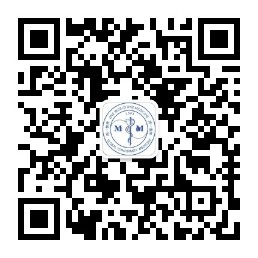了解肝豆状核变性(HLD)患者超声影像学改变情况,并分析其超声影像学改变与肝功能损伤程度的相关性。方法 选取141例HLD患者作为研究对象,根据超声二维声像图检查结果,将其分为基本正常组、轻度改变组、中度改变组和重度改变组,检测各组肝功能指标水平,分析超声影像学改变与肝功能指标的相关性。结果 本研究中基本正常组13例(9.22%),轻度改变组36例(25.53%),中度改变组35例(24.82%),重度改变组57例(40.43%)。4组患者肝功能指标比较差异有统计学意义(P<0.05)。其中,中度改变组丙氨酸氨基转移酶、天门冬氨酸氨基转移酶水平低于基本正常组、轻度改变组、重度改变组,血清碱性磷酸酶水平低于基本正常组、轻度改变组;重度改变组血清胆碱酯酶、总蛋白、白蛋白水平低于其余3组,血清总胆红素、直接胆红素水平高于其余3组,血清γ-谷氨酰基转移酶高于中度改变组(P<0.05)。Spearman相关性分析结果显示,超声检查结果所示肝脏损伤程度与血清胆碱酯酶水平呈中等负相关,与血清直接胆红素水平呈中等正相关,与血清白蛋白水平、血清总蛋白水平、血清丙氨酸氨基转移酶水平及血清碱性磷酸酶水平呈弱负相关,与血清总胆红素水平呈弱正相关(P<0.05)。 结论 HLD超声影像学改变与肝功能血清学指标水平存在相关性,超声影像学改变可以反映患者肝功能的变化情况。
微创医学 页码:291-296
作者机构:广西壮族自治区职业病防治研究院1 超声诊断科;2 护理部;3 科教科;4 毒理室;5 检验科;6 神经内科,广西南宁市 530021
基金信息:广西医疗卫生适宜技术开发与推广应用项目(编号:S2022044);广西壮族自治区卫生健康委员会自筹经费科研课题(编号:Z-A20220341) *通信作者
- 中文简介
- 英文简介
- 参考文献
Objective To investigate the changes of ultrasonic imaging in patients with hepatolenticular degeneration (HLD), and to analyze the correlation between these ultrasonic imaging changes and the degree of liver function damage. Methods A total of 141 patients with HLD were selected as research subjects. According to the results of two-dimensional ultrasonic sonogram examination, they were divided into basically normal group, mild change group, moderate change group and severe change group. The indicator levels of liver function in each group were detected, and the correlation between ultrasonic imaging changes and liver function indicator level was analyzed. Results In this study, there were 13 cases (9.22%) were basically normal, 36 cases (25.53%) were mild change, 35 cases (24.82%) were moderate change, and 57 cases (40.43%) were severe change. There were statistically significant differences in the indicator levels of liver function among the four groups (P<0.05). Specifically, the moderate change group showed lower levels of serum alanine amino-transferase and aspartate amino-transferase than the basically normal group, mild change group, and severe change group, along with lower serum alkaline phosphatase levels compared to the basically normal group and mild change group. The severe change group had lower levels of serum cholinesterase, total serum protein and serum albumin, and higher levels of serum total bilirubin and direct bilirubin than the other three groups, while having a higher serum γ-glutamyl transferase level than the moderate change group (P<0.05). Results of Spearman correlation analysis showed that the degree of liver injury detected by ultrasound examination was moderately negatively correlated with serum cholinesterase level, moderately positively correlated with serum direct bilirubin level, weakly negatively correlated with serum albumin level, serum total serum protein, serum alanine amino-transferase level, and serum alkaline phosphatase level, and weakly positively correlated with serum total bilirubin levels (P<0.05). Conclusion There is a correlation between ultrasonic imaging changes of HLD and serological indicators levels of liver function, and ultrasonic changes can reflect the variations in patients' liver function levels.
-
无




 注册
注册 忘记密码
忘记密码 忘记用户名
忘记用户名 专家账号密码找回
专家账号密码找回 下载
下载 收藏
收藏
